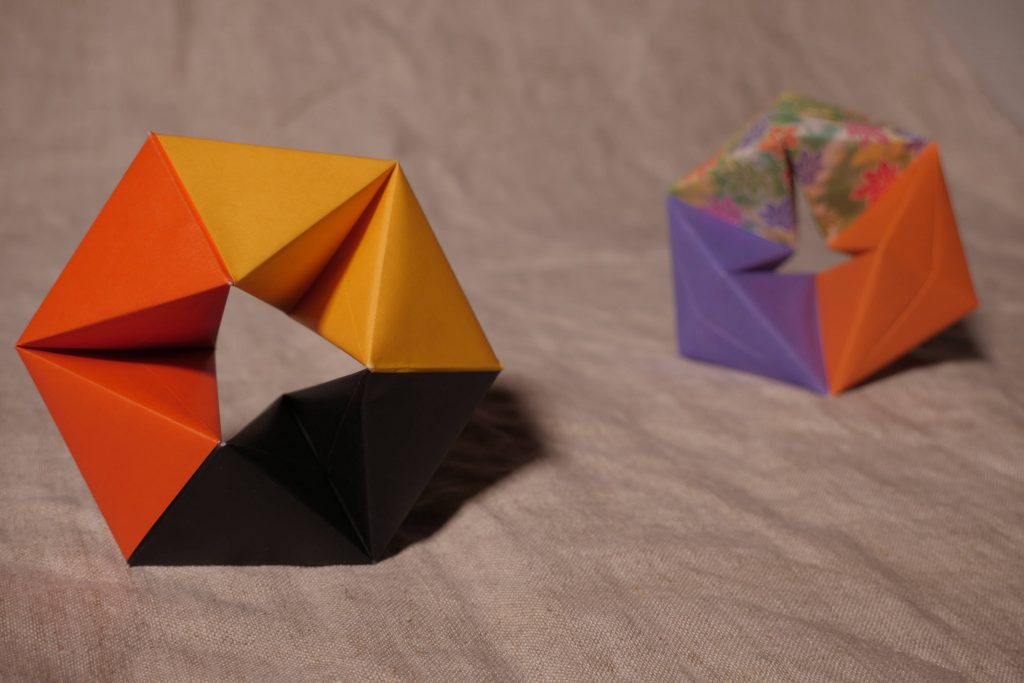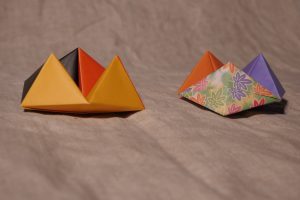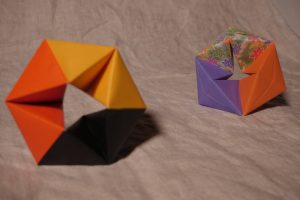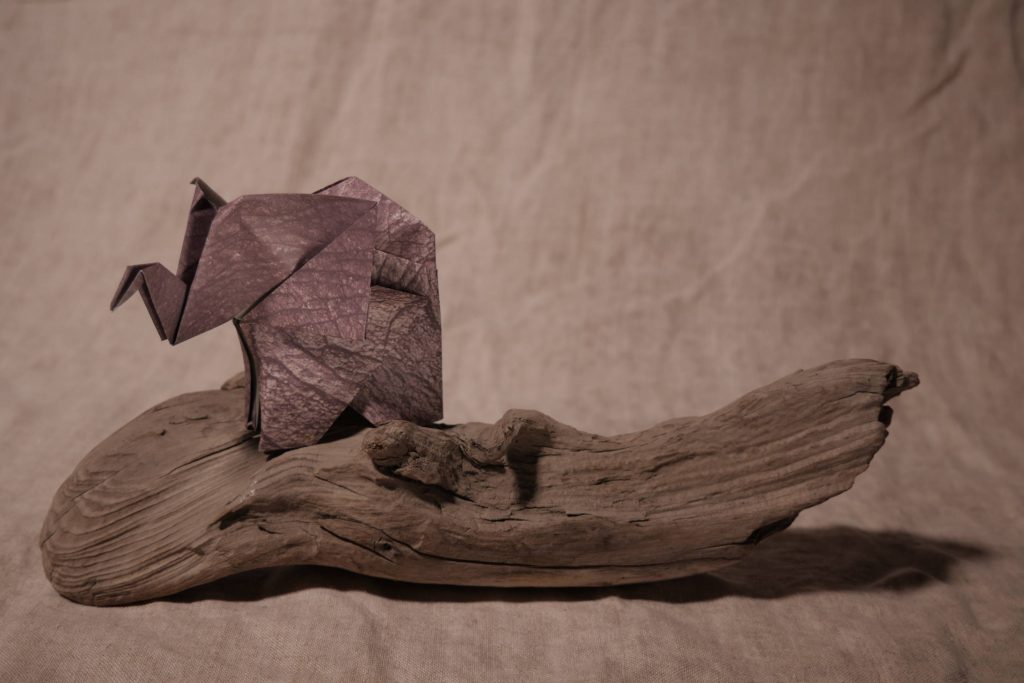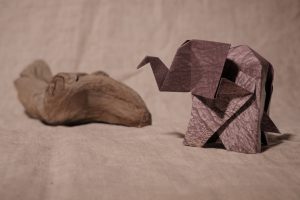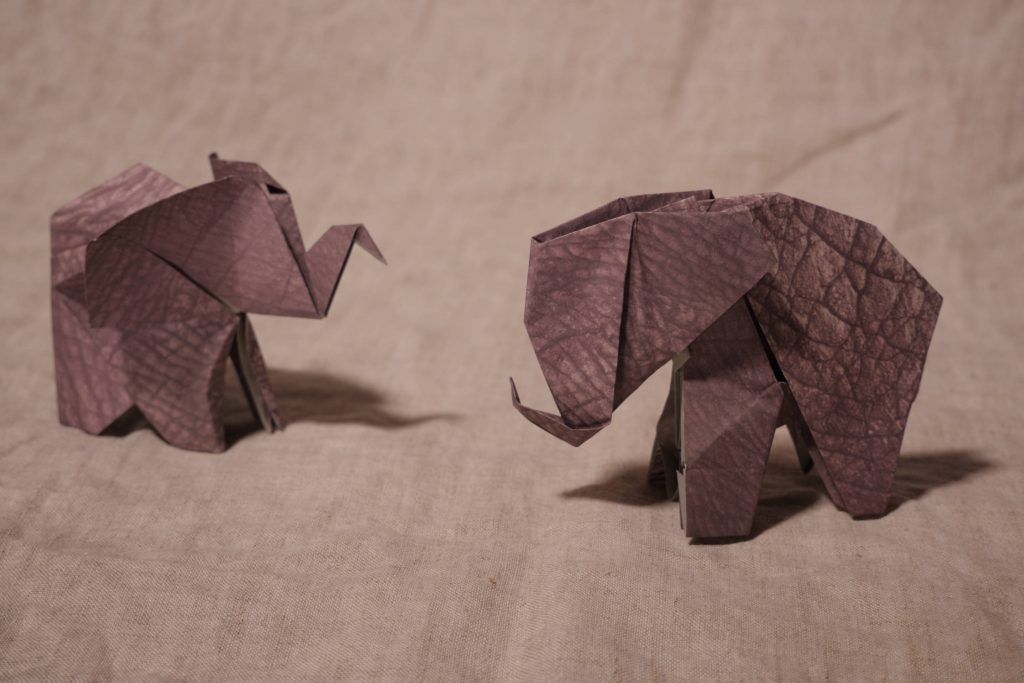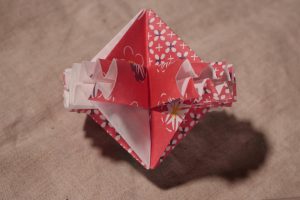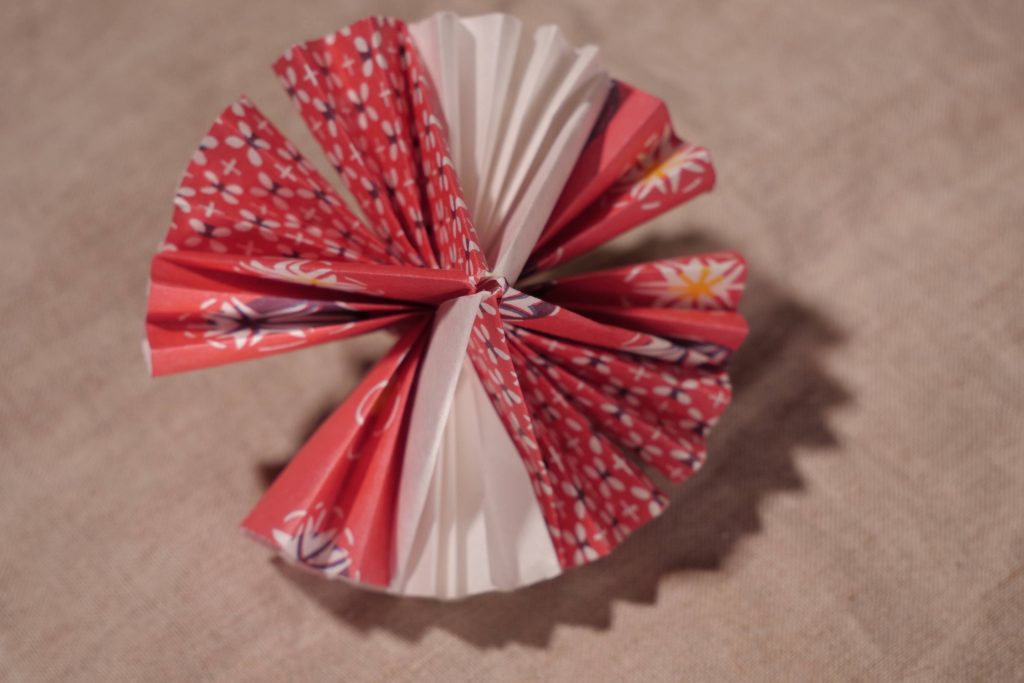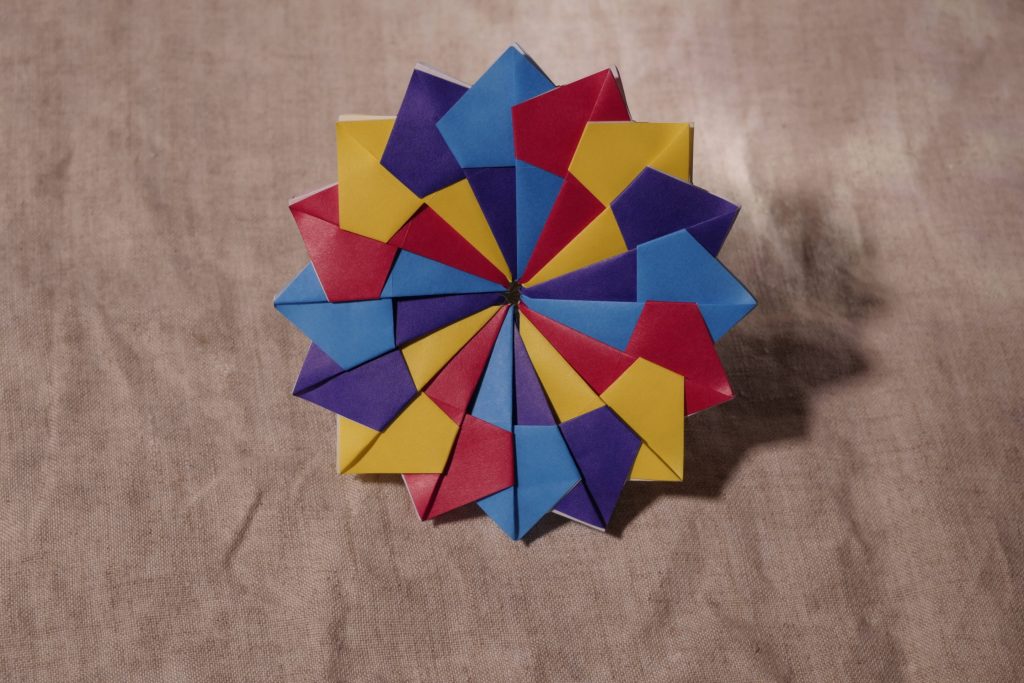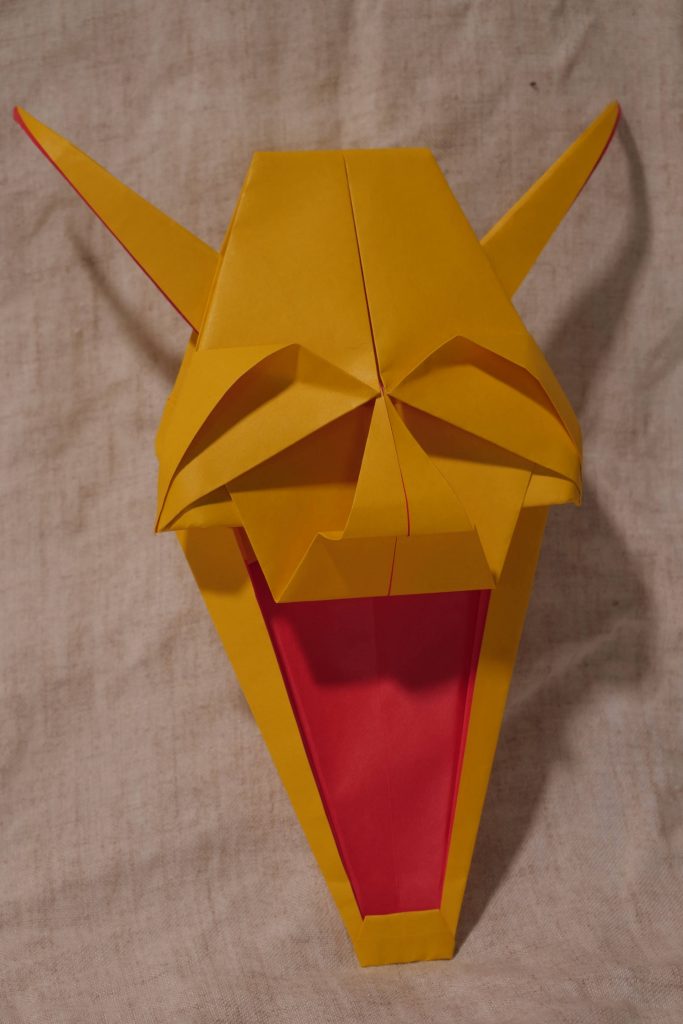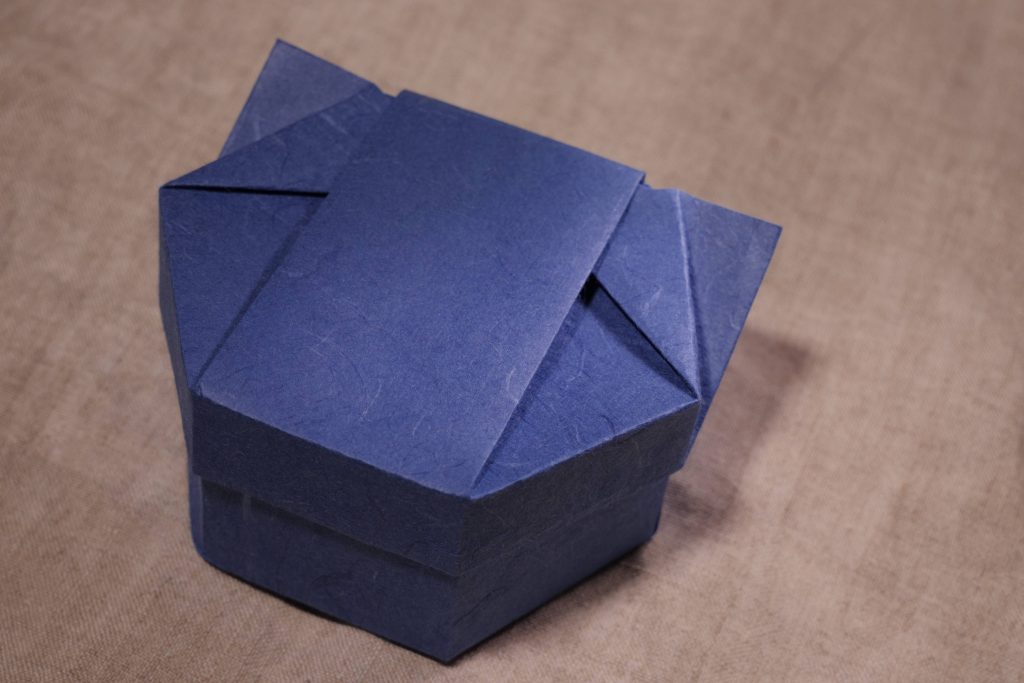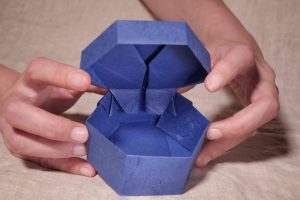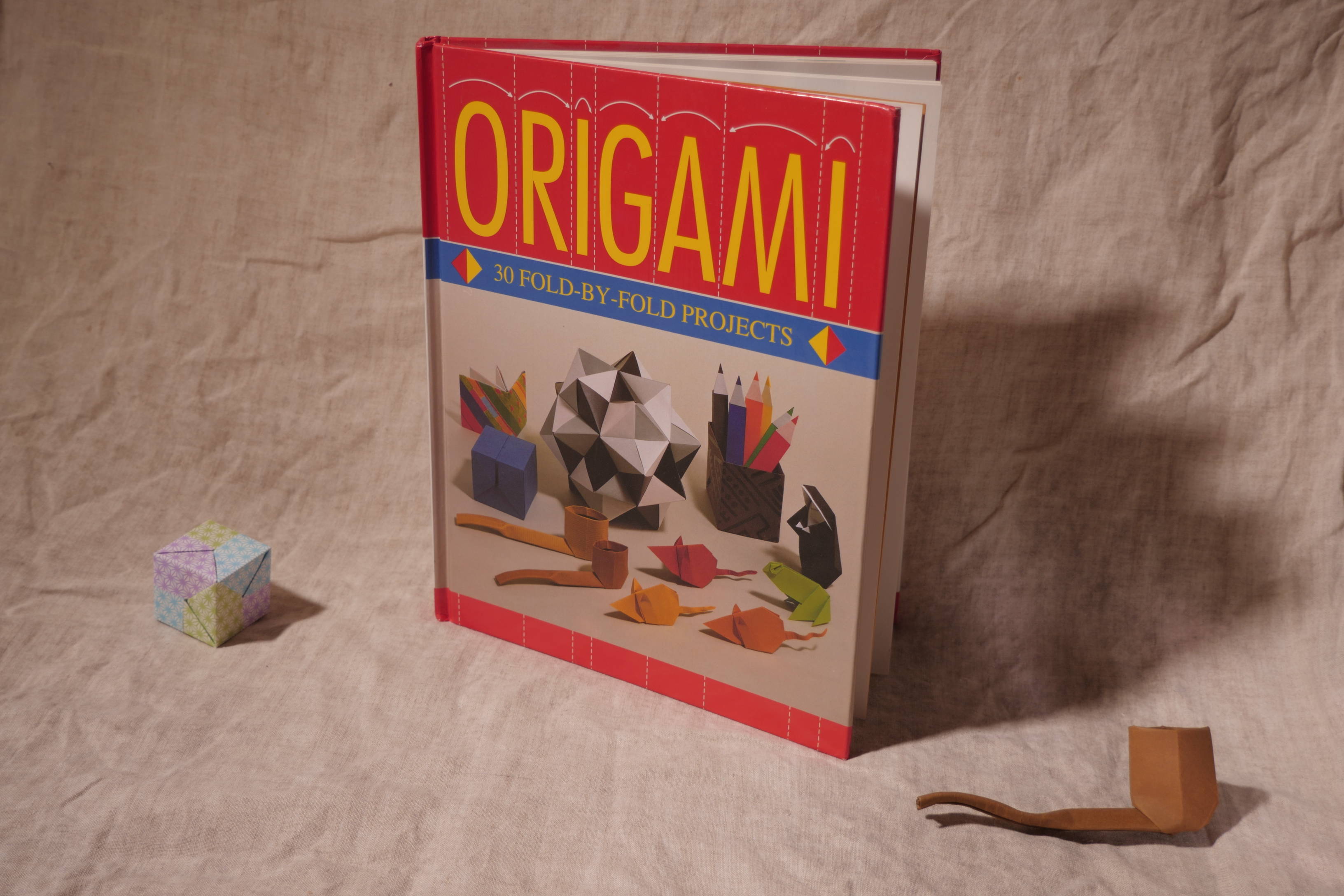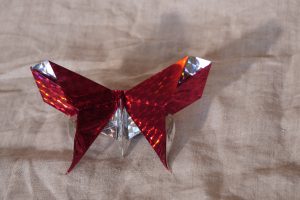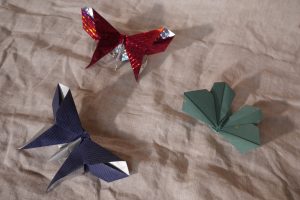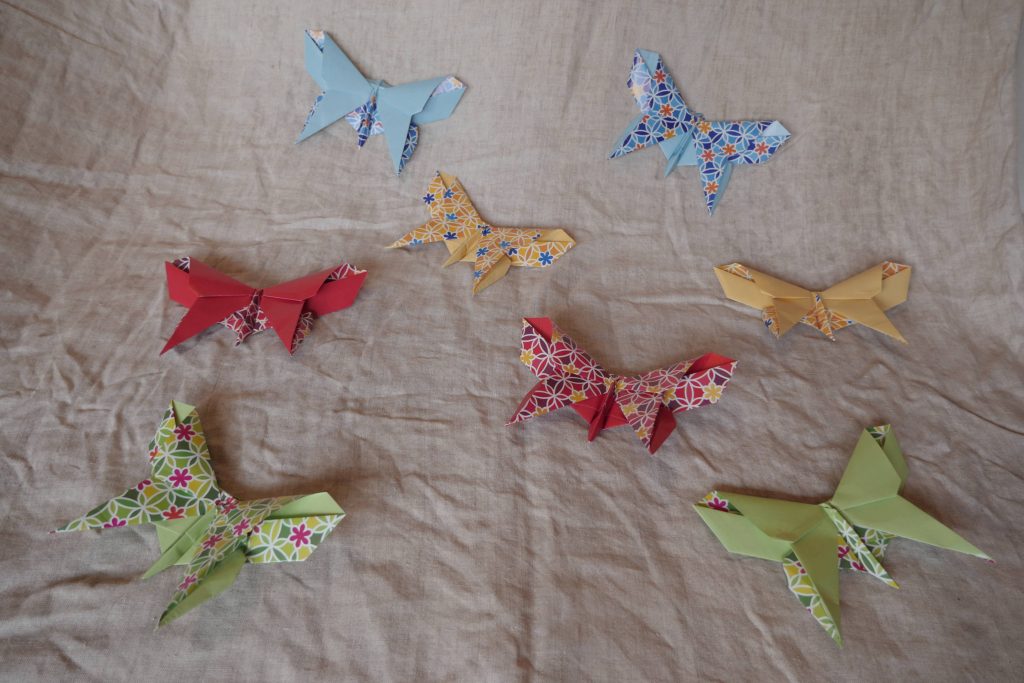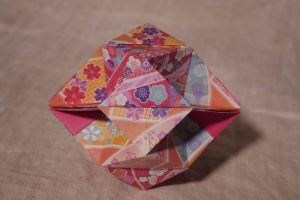One of the reasons I love origami is that I love paper. I always did. I enjoy admiring the patterns, and I love the texture of different papers in my fingers. When I find new papers to fold, it generally doesn’t go well at first – I love when my fingers suddently understand the precise resistence and strength of the paper, when I adapt the folds to allow for the exact thickness of the paper ; when the perfect model to let the designs be admired pops to my mind.
Origami is full of enlightenments. Concrete, material, my-hands-have-grasped-this revelations. I generally have a hard time getting my brain to be quiet for a while, and folding origami is a perfect way to reach that. There’s no point in over-thinking it, you have to fold to understand.
But then, there is fun to be had for my brain as well. Learning cryptic and often confusing japanese names for the different kinds of paper ; searching for good origami models, reading about amazing origami artists, and sometimes pour this new knowledge in their wikipedia pages in the process ;)
One might even find spiritual, philosophical enlightenments. It does teach patience and it’s sometimes a form of meditation, relaxation or such. It’s also an art of the ephemeral: creations of paper are to be enjoyed while they last, but you know the colors will fade, or children hands will get to them, or your previously most beloved creations will seem dull, clumsy once you’ve learned new models, once your hands become more agile. And that’s not an issue, that’s the whole beauty of it: I love to give my origamis when people ask for them, it makes place for new ones, it’s a constant reminder of impermanence.

